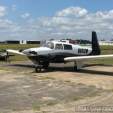Do You Use Speed Brakes for Anything Unusual?
-
Members Online
- ronr
- EKoS
- IvanP
- MB65E
- Hector
- Jamesp
- Stephan Kablitz
- Marc_B
- N201MKTurbo
- tammy
- Bolter
- kasm
- Hank
- Ragsf15e
- MoonFlyer68
- Jeff Uphoff
- Fly Boomer
- PaulM
- Ibra
- AndreiC
- Robert C.
- peterl
- 201Mooniac
- Garmin Aviation Team
- redbaron1982
- TCC
- PeteMc
- kortopates
- adventuresaviationllc
- Skyland
- DCarlton
- Jim Peace
- FlyingScot
- MattCW
- Rwsavory
- 201er
- Patrick Horan
- 47U
- Tyler G
- MusicCityMooney


Recommended Posts
Join the conversation
You can post now and register later. If you have an account, sign in now to post with your account.